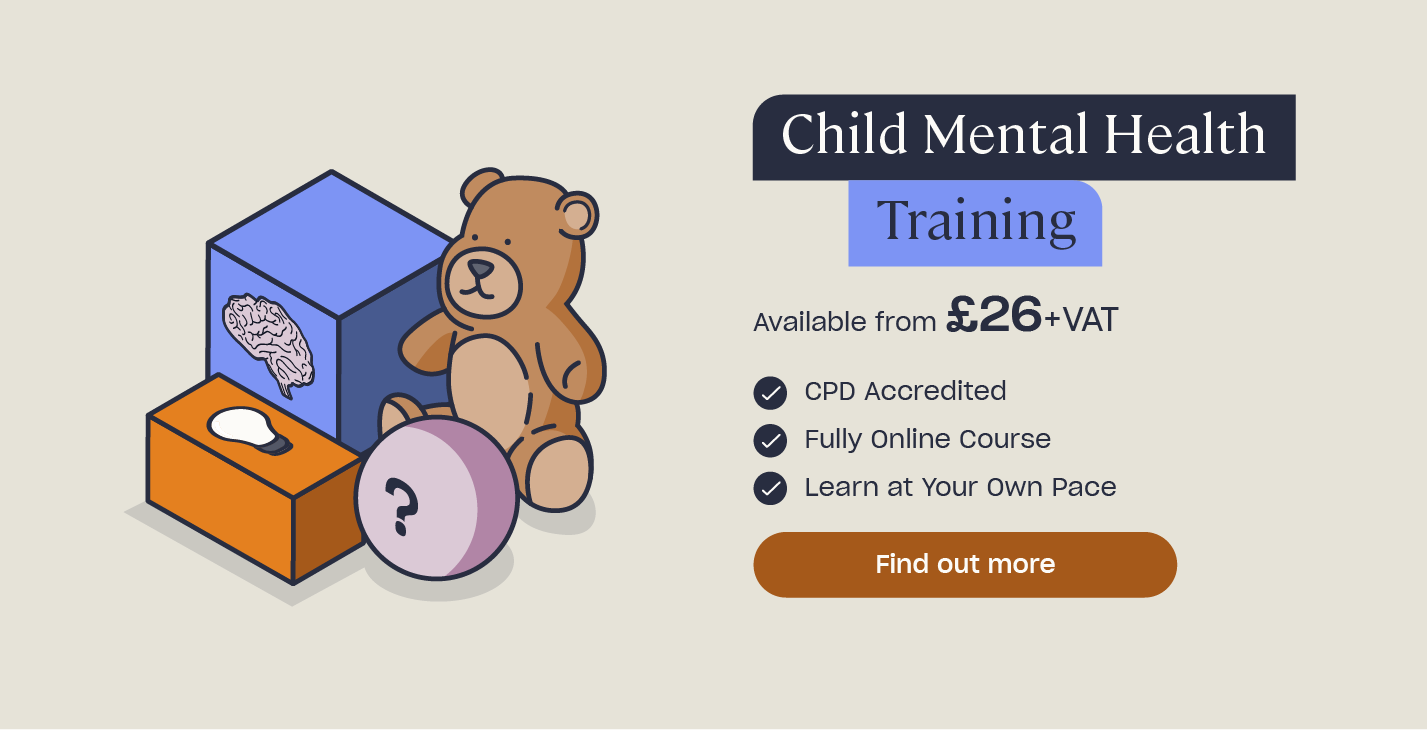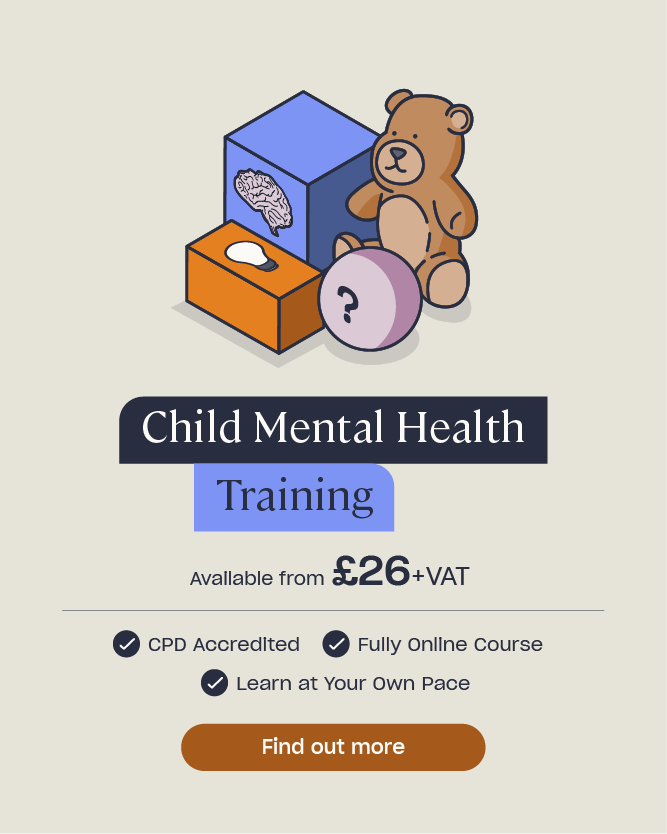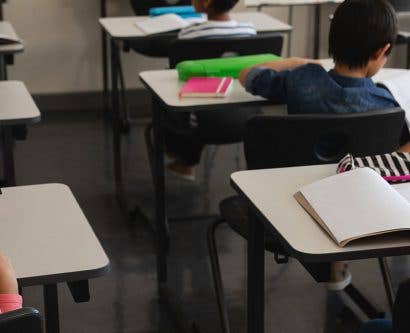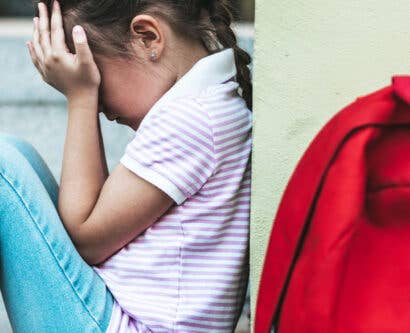Suicide Prevention in Schools
In July 2025 the Department for Education (DfE) published new guidance that mandated the addition of suicide prevention to secondary school curriculums. All those who work with children have a responsibility to keep them safe and this includes having the knowledge and skills to safely discuss suicide and suicide prevention. In this article we will explore what suicide prevention is, why it’s important in schools and how schools can create a safe and supportive environment for all students.
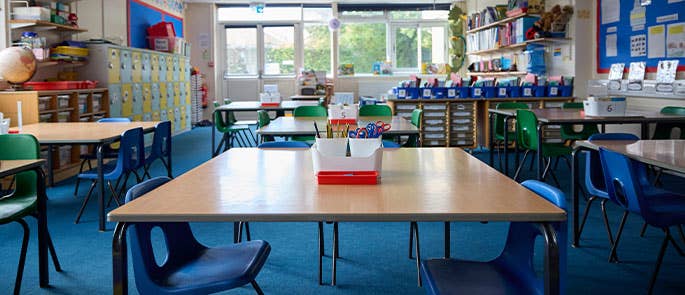
What is Suicide Prevention?
According to the World Health Organisation (WHO) more than 720,000 people die by suicide every year. It was also the third leading global cause of death among 15 – 29 year olds in 2021, highlighting how young people are not exempt from the pressures and stresses that can lead someone to suicide. In the UK, suicide is the main cause of death in young people under the age of 35 and over 200 teenagers are lost to suicide every year. Suicide prevention refers to the steps taken at individual, community and national levels to prevent suicide and suicide attempts.
In July 2025, Bridget Phillipson, the Secretary of State for Education announced changes to statutory guidance on Relationships, Sex and Health Education (RSHE) in schools. Part of those changes included new content on teaching about suicide prevention. The guidance mandated that schools should have a plan for addressing suicide prevention safely and that staff have the necessary skills and knowledge to do so. The inclusion of suicide prevention in the national curriculum is in part due to the tireless campaigning of Andy Airey, Mike Palmer and Tim Owen and their campaign 3 Dads Walking.
3 Dads Walking was founded by the three men in memory of their daughters Sophie, Beth and Emily who all sadly died by suicide. Since 2021 the 3 men have walked over 1,500 miles across the UK and raised over £1.5 million for PAPYRUS Prevention of Young Suicide. Part of their campaigning included working alongside MPs and charities to call for change and their work played a notable role in getting suicide prevention added to the school curriculum in England.
The government has not yet announced what suicide prevention in schools should specifically look like, however it has been made clear that the lessons should be age-appropriate and should address the topic safely. The WHO’s LIVE LIFE guidance, an implementation guide for suicide prevention, recommends four effective, evidence-based key interventions that should be included in suicide prevention measures. These interventions are:
- Limiting access to the means of suicide
- Interacting with the media for responsible reporting of suicide
- Fostering socio-emotional life skills in adolescents
- Early identification, assessment, management and follow up for anyone who is affected by suicidal behaviours
Suicide prevention cannot solely be addressed in schools and some of the interventions recommended by the WHO are outside a teacher’s remit of responsibility. However, effective suicide prevention requires coordination and collaboration across multiple sectors and society as a whole. As such, teachers and schools must not underestimate the role they can play in preventing suicide or the efficacy of the interventions that they can offer.
Suicide prevention is not only focused on crisis intervention and there are numerous stages at which a school can offer support before a crisis. A vital part of this is creating and promoting an environment of positive mental health. In so doing, children will feel safe to discuss any fears or concerns they may be having rather than suffering in silence. Research has shown that appropriate early intervention and support is effective at preventing suicide. However in spite of this, stigma around suicide and mental health conditions that can often exacerbate suicidal behaviour, means that many people suffer in silence. By creating a positive and supportive environment children will feel safe to seek help and to openly discuss how they are feeling.

The Importance of Suicide Prevention in Schools
As mentioned above, suicide prevention cannot solely be addressed by schools. Nevertheless, schools play an incredibly significant role in suicide prevention. Two of the key interventions that the WHO recommends for suicide prevention are fostering socio-emotional life skills in adolescents and early identification and assessment of anyone who is affected by suicidal behaviours. Schools are well positioned to offer support in both of those areas, providing students with life skills that can help to prevent suicide and intervening when a student shows signs of suicidal ideation.
The United Nations Education, Scientific and Cultural Organisation (UNESCO) defines social and emotional learning (SEL) as the process of acquiring the competencies to recognise and manage emotions. These skills enable an individual to:
- Develop care and concern for others
- Establish positive relationships
- Make responsible decisions
- Handle challenging situations effectively
- Understand and express emotions
- Display empathy and compassion for others
Developing these skills can improve feelings of connection, support a student’s mental well-being and encourage positive social behaviour that creates a safe environment for all. In turn, this will help a child to manage suicidal thoughts be providing them with the skills to keep themselves safe and guidance as to where they should turn for help.
Suicide is by no means a ‘new’ issue and it has been a prevalent concern for decades. Moreover, in spite of declining rates of suicide, in 2023 the suicide rate in England and Wales was the highest that it had been since 1999. Unfortunately rates have not significantly decreased since then and it has been argued that social media has played a notable role in the increase in suicide amongst young people. Whilst the internet can be a source of invaluable and life saving information, signposting people to where they can get additional help, it can also be a dangerous minefield where young people are bullied, presented with graphic content and even coerced into attempting suicide. The charity Samaritans notes that whilst suicide related content can be extremely helpful for users and a part of their recovery, there are undeniable risks associated with this type of content.
These risks include:
- Promoting, encouraging or glorifying self-harm and suicide
- Sharing methods of harm
- Social contagion
- Imitative or copycat suicides
Research from Samaritans and University of Bristol found that 26% of young people who had presented to hospital for self-harm or a suicide attempt had used the internet in relation to their attempt. Whilst research is limited, when compared to only 8.4% of adults, this figure suggests that young people are at an increased risk of harm from viewing self-harm and suicide content online. In light of this, it’s important to acknowledge the role that the internet and social media plays in the lives of young people. Generation Z and Generation Alpha are often referred to as ‘digital natives,’ meaning they grew up in a digital age using the internet and electronic devices from a very young age. An inescapable consequence of this is the prevalence of the internet in their lives which makes it much easier for them to access and view harmful content than it was for previous generations. Developing a child’s social and emotional skills provides them with the tools and perspective to engage with the internet in a more critical way, helping them to limit its potentially negative impact on their lives and mental wellbeing.
Schools are also in a good position to identify students who may be struggling with suicidal ideation. Suicidal ideation, or suicidal thoughts, refer to the thoughts that someone might be having about ending their life. These thoughts can be active or passive and can build up gradually or happen suddenly. If someone is struggling with suicidal ideation and making clear plans to end their life, there are likely to be changes in their behaviour which school staff should be able to recognise. These behaviours include:
- Talking about wanting to die or disappear
- Talking or writing about death
- Giving away possessions
- Withdrawing from family and friends
- Becoming angry or hostile
- Changes in eating habits and sleeping patterns
- Mood swings
Not everyone who exhibits these behaviours is suicidal however, those who work with children must be able to identify these as potential warning signs. In so doing they can identify students who may be struggling with their mental health and contemplating suicide and so offer support and vital early intervention.
Want to Learn More?
There are a myriad of different reasons why someone may be driven to suicide. As such, it’s important that those who work with children have an awareness of the stressors that may negatively impact a child’s mental health and drive them to suicide. High Speed Training has a range of articles on topics that can negatively impact children and their mental well being.
These include:
The Dangers of Cyber Bullying
How to Explain Internet Safety to Children
Social Media in Schools
Mobile Phones in Schools Debate
Having an awareness of the different things that can impact a child’s mental health will enable you to approach these topics with a tailored understanding.
Key Components of Suicide Prevention in Schools
As mentioned, the government has not yet announced what suicide prevention in schools should look like, nor have they stated what it should and shouldn’t include. Nevertheless, there are key components that all suicide prevention programmes should include. Suicide prevention of any kind is more effective when approached holistically. As such, all members of staff should ensure that they are contributing to a positive learning environment and that they are actively working on suicide prevention outside of RSHE lessons. This by no means necessitates mentioning suicide in situations where it is not relevant or would be inappropriate, however, it does mean embodying suicide prevention wherever possible.
For example, in English you may discuss a character who is struggling with their mental health or dies by suicide. If the class begins to speak about that character in a derogatory manner, this adds to the stigma surrounding mental health issues and suicide. This creates an echo chamber of condemnation which silences those who are struggling out of the fear that their struggles will be met with the same contempt. As such, taking the time to explain the nuance of the character, what their struggles are and how similar struggles can impact anyone at any time, normalises discussions about mental health and suicide.
Key components of suicide prevention in schools includes:
Robust safeguarding policies 
Safeguarding policies are integral to keeping children safe and ensuring that staff know what to do in different situations. They are also clear indicators to all pupils that a school takes their safety seriously and that the school is taking all necessary steps to adhere to their safeguarding responsibilities. Having a mental health policy in place will further support students and reaffirm your school’s commitment to students’ mental health and wellbeing.
It’s also important to consider how you will respond in the event of a suicide. Suicide bereavement through the death of a pupil or member of staff can have a far reaching impact on the well being of all those in school. As such, it is useful to include how your environment will respond in this situation in any policies that you may write. This ensures that all staff and pupils are given the necessary support and guidance and that they know what will be offered to them. It also enables you to think about the language you will use to explain the situation to pupils and any additional actions, such as offering additional support to the close friends of a student who died by suicide, that the school can take.
Staff training 
Providing staff with regular comprehensive training ensures that they have the necessary tools to support students, recognise signs of concern and know how to act accordingly. You do not necessarily need all staff to be trained to the same level, for example you may only offer Designated Safeguarding Lead training to the member of staff who will become the DSL. However, it is undeniably beneficial to ensure that all staff have a base understanding of child mental health, suicide prevention and signs of safeguarding concerns that they should be looking out for. Ensuring staff have adequate training gives them the confidence to identify and support children who may be struggling and intervene before severe action is taken.
Developing social and emotional skills 
Teaching students how to develop their social and emotional skills will reduce distress and anxiety and give them the tools to better handle intense emotions. The goal isn’t necessarily to build emotional ‘resilience,’ as it would be dismissive to say that a lack of resilience is what drives people to suicide. Instead, it’s about supporting a child’s mental wellbeing by giving them the tools to positively engage with others, build a sense of community and respond to emotionally turbulent times in healthy ways.
Having open conversations 
Despite being the leading cause of death in young people in the UK there is still significant stigma around suicide. The language that you use can greatly impact a child’s willingness to talk to you or admit how they are feeling. If conversations around suicide are treated with fear or the topic is immediately dismissed when it is bought up, this perpetuates the stigma that it isn’t something that should be discussed in public. This creates a vacuum in which those struggling don’t feel like they can admit how they are feeling for fear of condemnation and potential retaliation. Ensure that any conversations you have are age-appropriate and informative and be mindful of your language. Avoid saying that someone ‘commited’ suicide as this is an archaic phrase rooted in a time in which suicide was illegal; instead, say that someone ‘died by suicide.’ You should also avoid saying that someone is ‘suicidal’ and instead say that they are ‘having suicidal thoughts.’ This reaffirms that suicidal ideation is not a fixed part of a child’s identify but a feeling that they are experiencing that will hopefully be temporary. These changes may appear small but they are incredibly impactful and can help to reduce the stigma around suicide. It also ensures that children have the correct language to identify and explain how they are feeling, ensuring that the support they receive is tailored and effective.
There are numerous different risk factors that can put a young person at a higher risk of dying by suicide. These risk factors include, race, religion, poverty, sexuality, gender identity and special educational needs, amongst many others. Children and young people are not exempt from the additional stresses that these factors can create simply because of their age. When discussing suicide and suicide prevention with children it’s vital that you do not shy away from discussing these facts, especially as some students in your class may be at higher risk of dying by suicide than others. Failing to acknowledge this is harmful and dismisses and invalidates the lived experiences of minority groups which can exacerbate feelings of isolation.
As mentioned, the introduction of suicide prevention to the national curriculum is new. The DfE have not yet offered specific guidance on what suicide prevention education should look like in schools and this makes it hard to definitively say what a suicide prevention programme must include. Nevertheless, the steps above encompass a holistic approach which embeds suicide prevention into all facets of school life, rendering early identification and intervention much easier.
How to Talk to Children and Young People About Suicide
Talking to anyone about suicide can be difficult and this is especially true for children and young people. They may struggle to understand the concept of suicide or what might lead someone to attempt it. Moreover, depending on the age of the pupil, they may not have a solid understanding of death, adding an extra layer of complexity. However, that is not to say that it should not be discussed with them. It’s natural to want to shield young people from some of the darker realities of life and discussing suicide can feel like something they don’t ‘need’ to know about. Nevertheless, the reality is that poor mental health can impact anyone, at any age and at any time. Moreover, the importance of the internet to young people’s lives and the easy accessibility of social media renders it almost impossible to know what content a child is engaging with. If this content is harmful but they have no understanding of it, they are more susceptible to being coerced or influenced into repeating harmful behaviours.

Avoiding discussing suicide with children and young people does not protect them and in some instances it can do more harm than good. When discussing suicide with a child or young person:
- Keep all information age-appropriate – Death in any context can be a difficult topic to discuss with young people. If they don’t understand what you are saying don’t try to downplay the severity of what you are discussing, instead alter your approach and use language they can better understand.
- Be mindful of your language – Attempt to be as objective and factual as possible. Avoid using euphemisms that downplay the severity of suicide such as ‘they did something silly’ and instead use open, considerate and non-judgemental language.
- Listen – Exercising active listening is essential so that pupils feel comfortable sharing and asking further questions. It also shows them that you are someone who will take what they are saying seriously and not simply dismiss them because of their age.
- Offer reassurance – It’s natural for a young person to have a lot of follow up questions after discussing suicide. Where possible, and appropriate, answer those questions as best you can and reassure your students that their questions are important. It’s also beneficial to reassure students that, within reason, the topic of suicide is not ‘off limits’ and that if they ever want to discuss it in a different environment/lesson they are free to do so.
- Admit when you don’t know or can’t answer – It’s highly unlikely that you will be able to answer every question a child may have about suicide. It may be because it is inappropriate for you to offer the answer, such as them asking about the mechanics of suicide, or that you do not know. Answer questions openly and honestly. If you don’t know the answer and it would be appropriate for them to know, reach out to your DSL and gain further knowledge. If the answer wouldn’t be appropriate for their age, tell them but don’t dismiss their curiosity. Where possible adapt your answer so that it is age appropriate or reach out to other members of staff or the child’s parents if their line of query is cause for concern.
If a child reveals to you that they have been having suicidal thoughts:
- Remain calm and try to keep your composure. It can be emotionally difficult to hear that someone has been struggling with suicidal ideation, especially when that person is very young. Nevertheless, you need to assess the child’s safety and they are more likely to reveal this if you stay calm.
- Reassure the child that they did the right thing by telling you and that you are taking them seriously. Give them as much time as needed to talk to you and avoid having the conversation in a rushed moment when you don’t have time to fully listen, such as in between lessons. Find a quiet place, away from distractions, be patient and listen empathetically.
- Be honest with the child about the limits of confidentiality. Assure them that they are not in trouble and that they haven’t done anything wrong. However, make it clear that you have a responsibility to keep them safe which means you cannot keep certain information ‘a secret.’ This may be somewhat distressing for them to hear but it’s important that you are honest with them about the next steps.
- Ask them questions to assess the level of risk. These questions could include:
- Do you have a desire to end your life?
- How often do you feel like this?
- Have you made plans to end your life?
Ensure that you ask these questions delicately as you are not interrogating the child. Nevertheless, you need to figure out if they are at risk of immediate harm. Write down their answers and ensure that your notes are as objective and informative as possible. If you suspect that a child or young person is at risk of immediate harm from an overdose or life-threatening injury you must call for an ambulance on 999 straight away.
- Contact the DSL and inform them of what was disclosed to you. Unless there is a clear reason not to, such as alleged abuse, you should also contact the child’s parents/carers and inform them of what has been revealed. You can then discuss with the DSL and parents/carers what should be done next. If you have suicidal behaviour guidelines you should follow the guidance contained within.
You must never dismiss revelations of suicidal thoughts, no matter how ‘minor’ they may appear. Moreover, it is likely to have taken significant courage and trust for a child to admit that they have been having suicidal ideation. It’s vital that you recognise that bravery and protect that trust by maintaining an open line of communication with that child.
Schools have a responsibility to keep children safe and this includes preventative measures. Suicide prevention saves lives and educators are in an invaluable position to teach the emotional skills and offer the pastoral support that embodies suicide prevention. Suicide is an undeniably delicate topic, however avoiding discussing it is not a means of protection. Instead, finding an age appropriate way to discuss the topic with children and young people provides them with the knowledge, understanding and support that could one day, save their lives.
Further Resources:
- Child Mental Health Training
- Understanding Self-Harm in Childhood
- How to Help a Child with Depression
- How to Promote Positive Mental Health in Schools
- How to Write a School Mental Health Policy
- Peer Pressure in Schools
- Emotional Intelligence in Teaching


